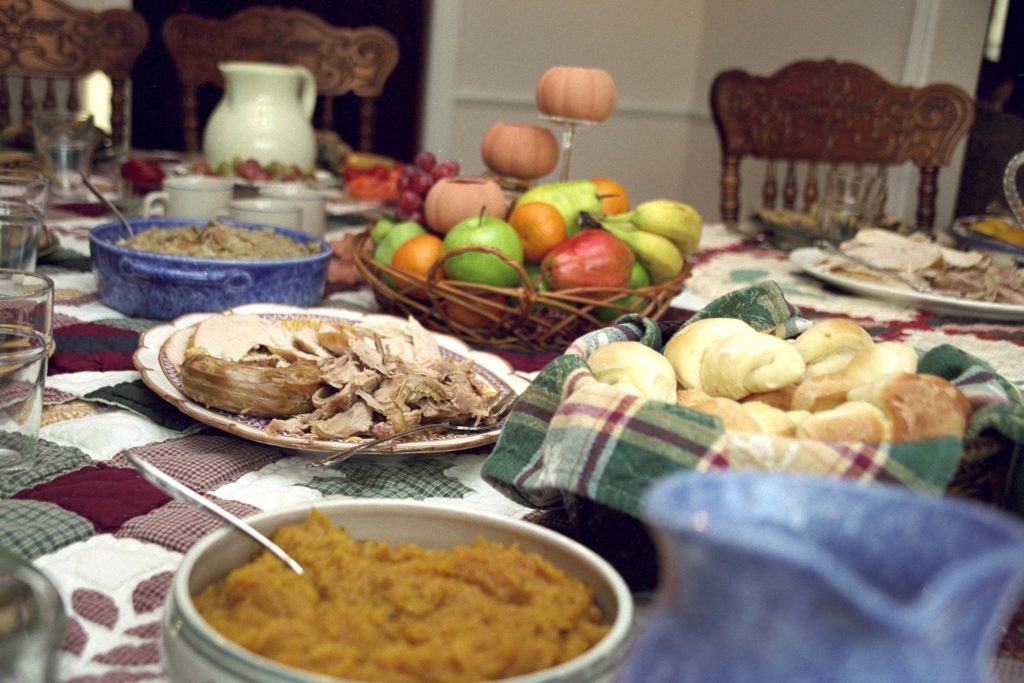Talking turkey about water footprints
November 19, 2017
It’s almost Thanksgiving, and as usual, we’ve got water on our mind. With all the cooking (and dishes to clean), we were wondering how much H20 is involved in the annual festival of food. Then we thought, “Why limit the question to what we use at home? Let’s find out just how much water it takes to create the feasts that grace our plates.”
Turns out, although some foods have smaller water footprints than others, it takes a lot more water than we expected. From growing to feeding, cleaning to processing, almost every step from farm to table involves water. Watercalculator.org breaks the water footprint into three components that are intended to cover every drop of water used to grow or process a plant or animal:
- Blue Water Footprint: The amount of surface water and groundwater required (evaporated or used directly) to produce an item – for food this mainly refers to crop irrigation.
- Green Water Footprint: The amount of rainwater required (evaporated or used directly) to make an item – for food this refers to dry farming where crops receive only rainwater.
- Grey Water Footprint: The amount of freshwater required to dilute the wastewater generated in manufacturing, in order to maintain water quality, as determined by state and local standards – for food this refers to things like field and farm runoff.
Most of the list that follows was sourced from the Groundwater Foundation. Keep in mind that these numbers are all estimated — it’s not feasible to track every single gallon used. But they’re in the ballpark, according to experts like the folks at United States Geological Survey.
Let’s start with the biggest sponge (it’s probably not what you think); the rest are in no particular order:
- Cranberries: These weigh in at a whopping 1,559 gallons PER CAN.
- Potatoes: 38 gallons per pound.
- Carrots: 36 gallons per pound.
- Turkey: 468 gallons per pound.
- Wine: 50-75 gallons of water per 8 oz. glass.
- Beer: 86 gallons per pint.
- Bread: 200 gallons per pound.
- Pumpkin (for the pie, of course!): 44 gallons per pound.
Talk about food for thought. If you’re conservation-minded, some of these numbers are enough to make you lose your appetite. However, there’s good news: As more people become aware of their own water footprints, food producers are taking notice, too. That’s led a drive to more sustainable practices. And farmers are always looking for ways to save money, so smarter irrigation methods make sense — and cents.
Finally, the good news is, veggies usually take a lot less water than meats — and buying fresh and local cuts down on water use for anything (little to no processing involved).
So pass the locally sourced mashed potatoes, please, and save us a drumstick. From all of us at LCA, have a happy Thanksgiving!